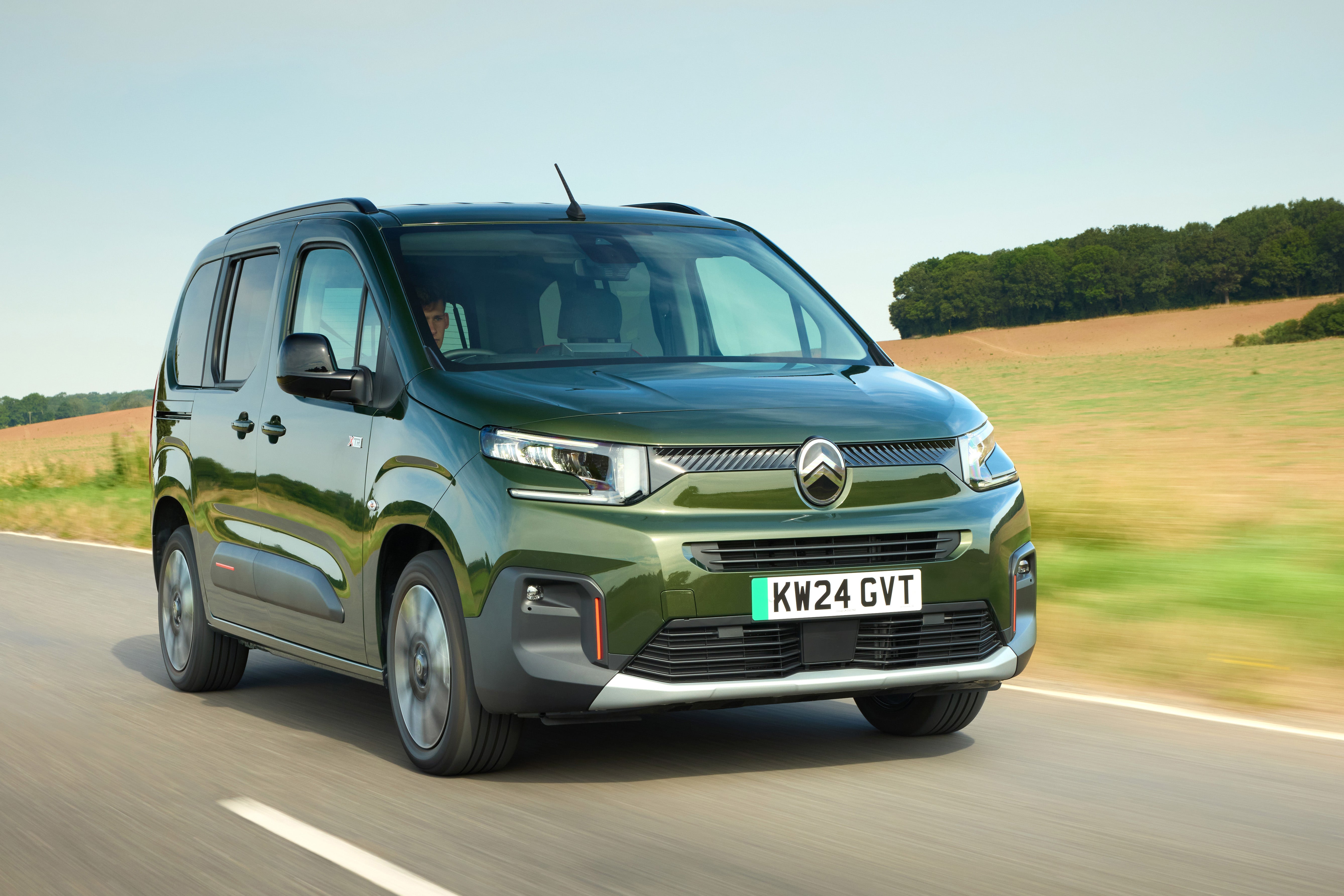Citroen e-Berlingo Review 2025: Price, specs & boot space
Written by Ivan Aistrop
Quick overview
Pros
- Loads of interior space
- Cheap to run
- Rather stylish for a van-based MPV
Cons
- Interior quality could be better
- Battery range isn't great by latest standards
- Infotainment system is a bit slow
Overall verdict on the Citroen e-Berlingo
“The Citroen e-Berlingo is one of the most practical family cars you can buy. It’s essentially a van with some extra seats and windows added in, along with a dab of style and about a million different places to store things. If you’ve got an active family that needs to be kept occupied, then it’s a great option, although longer trips will require planning due to the relatively small battery range.”
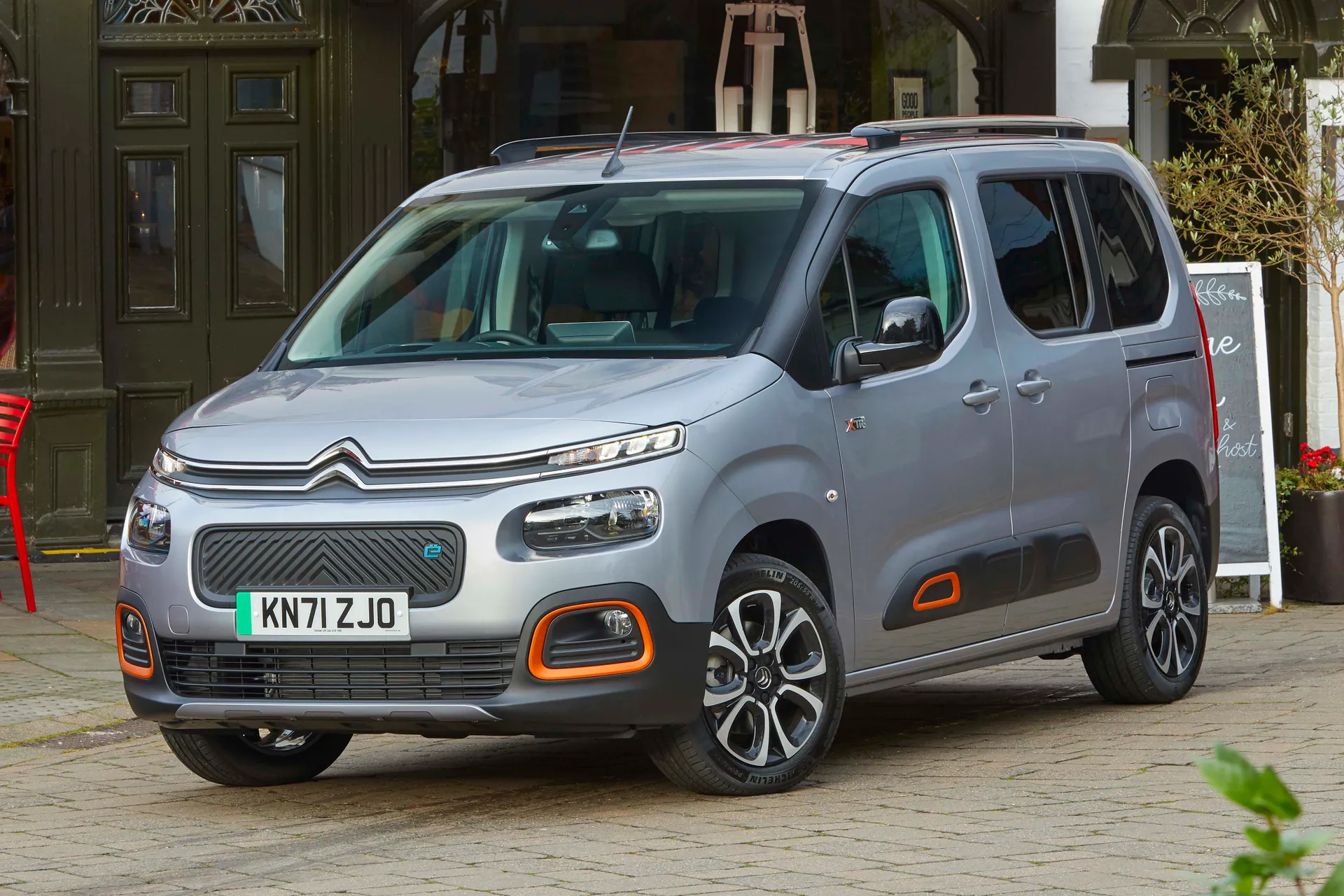
In an age when electric SUVs have taken over as the preferred car of choice for many families, you may be wondering if there’s still a place in the world for the humble MPV. Well, the Citroen e-Berlingo is here to tell you that yes, there most definitely is. If practicality is your number one priority, then there isn’t an SUV on the market that can compete with the sheer space and storage possibilities that the e-Berlingo offers. Available in both five-seat and seven-seat forms, it’s got a large boot and seemingly no end of storage spaces inside the cabin.
Performance is just about acceptable for the everyday ferrying of families, although there’s none of the electrifying (no pun intended) acceleration you get from some battery powered family SUVs. The ride is comfortable and smooth enough, but you get the feeling that top-class dynamics wasn’t a high priority for the engineering team.
And why would it be? Far better to put efforts into making the ultimate people carrier, from the durable, wipe-clean plastics to the individual fold-flat back seats, the sliding rear doors that won’t bump into neighbouring vehicles in the car park, and the fold-up tables in the backs of the front seats. Go for the M model and you’ll seat five in comfort, or go for XL, and you can expand that to seven.
By the latest standards, the battery range is modest: according to official figures, its 52kWh battery will give you up to 177 miles in the pre-facelift car, and up to 212 miles in the post-facelift car. That’s fine for regular around-town trips, but you’ll need to plan carefully for longer journeys.
That facelift of the e-Berlingo happened at the back end of 2024 and brought new looks and an extended range. The original model arrived at the end of 2021. There's also a petrol and diesel version of the Citroen Berlingo available, that was introduced a while before in 2018: the combustion-engined variant was discontinued in 2022, leaving only the electric version, but was then brought back by popular demand in 2024.
Looking for a used car for sale? We've got 100s of Citroen Approved Used Cars for Sale for you to choose from, including a wide range of Citroen Berlingo vans and MPVs for sale.
Is the Citroen e-Berlingo right for you?
Make a list of the qualities your next electric car needs to have. If practicality is at the top, then the Citroen e-Berlingo needs to be on your shortlist, because not much gets close when it comes to usable space. The flexibility of being able to sit up to seven is a key attraction, too.
If, however, you’re looking for something fun to drive, and luxurious or you need to cover long distances between charges, then this might not be the car for you.
What’s the best Citroen e-Berlingo model/battery to choose?
There’s just one motor and battery combination available in the Citroen e-Berlingo, which is a 136PS motor with a 52kWh battery. The choices you’ll need to make are with trim level and body style. If you need seven seats then the XL model is the obvious choice – otherwise, stick to the M model. As far as trim goes, the top-spec Flair XTR (later Max) model costs around £2,000 over than the entry-level Feel (later Plus) trim, so we’d go for that one to enjoy all the features that come with it.
What other cars are similar to the Citroen e-Berlingo?
Although the death of the MPV has been (incorrectly) trumpeted for many years, there are actually quite a few electric MPVs that you might consider alongside a Citroen e-Berlingo. Two – the Peugeot e-Rifter and the Vauxhall Combo Life Electric – are essentially the same car underneath, as they all share the same van-based mechanical underpinnings. Arguably, they’re not as stylish, however.
You could also look at the Ford E-Tourneo Custom and Toyota Proace Verso Electric, which are also based on vans, or at more premium options like the Mercedes-Benz EQV and Volkswagen ID.Buzz.
Comfort and design: Citroen e-Berlingo interior
"Function is very much at the fore when it comes to the Citroen e-Berlingo’s cabin, but that’s not to say it’s abandoned form and design altogether."
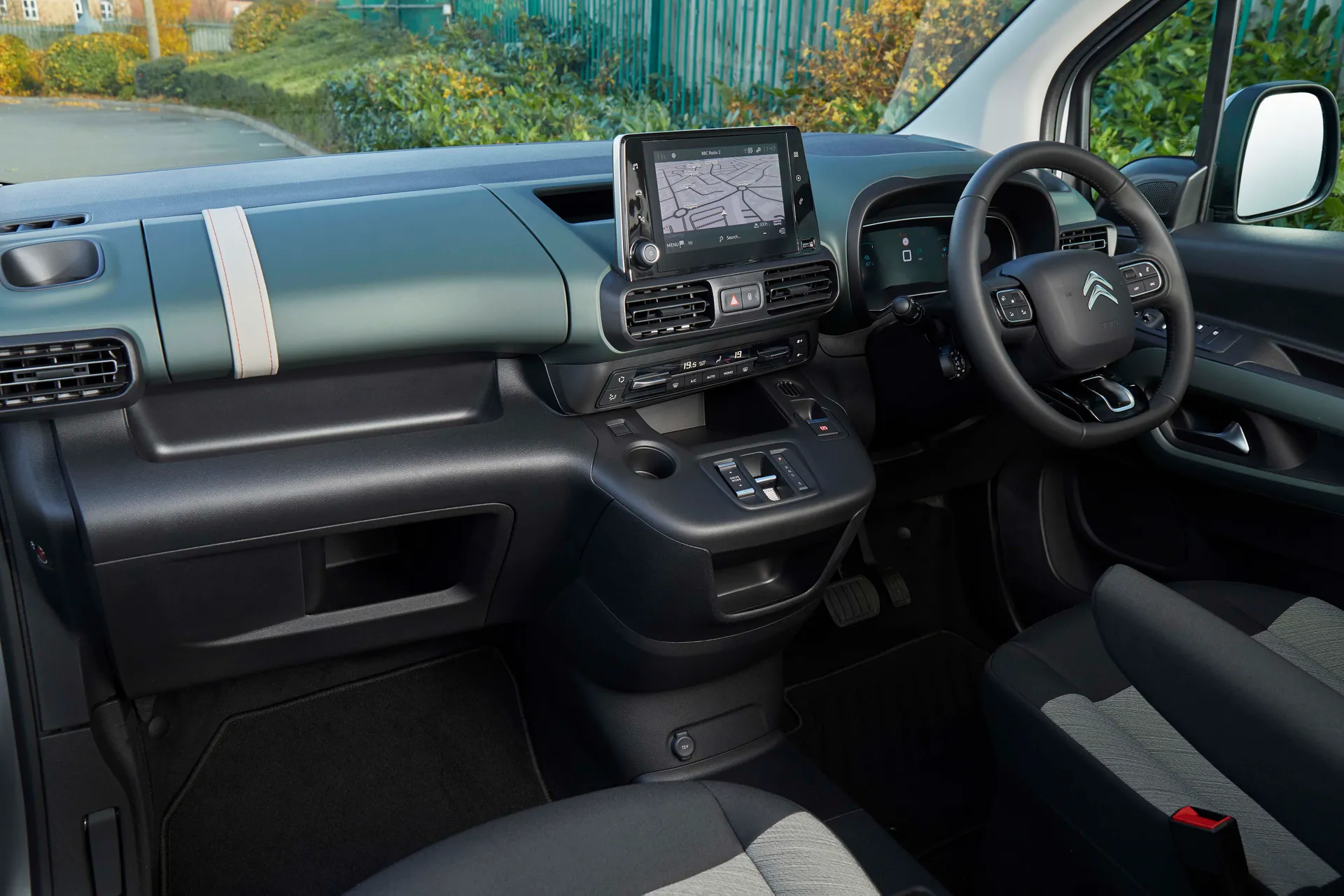
The styling features a mixture of chunky and bulbous forms, with hard, durable plastics that should be able to withstand the rigours of family life. The front seats are comfortable and supportive, with armrests for both driver and passenger as standard (although the armrests don’t adjust for height). You can also choose from a selection of eye-catching upholstery choices, and the optional panoramic sunroof (available on higher-end models) bathes the whole cabin in light.
Mostly, though, the e-Berlingo’s interior USP is its excellent space and practicality. More on that below.
Quality and finish
The e-Berlingo’s van origins are reflected in the quality of its interior materials, which feel robust and durable but not of the highest quality. Compared to something like a Volkswagen they feel decidedly scratchy and plasticky, and don’t even think about comparing them to something from premium brands like Mercedes. They’re workmanlike and solid enough, though, and the design touches escalate the interior considerably.
There are a few areas that raise eyebrows, however. Some elements don’t feel as solid as you’d hope for in a £30k-plus car, such as the slightly tinny thunk when you shut the door. Others seem badly thought out – the swooping side-window corner details look great from the outside, but from the inside, you see the underside of the plastic cladding, which soon gets dirt and grime stuck between it and the window.
Infotainment: Touchscreen, USB, nav and stereo in the Citroen e-Berlingo
In early versions of the e-Berlingo, you got an 8.0-inch touchscreen in the Feel trim, which was upgraded to a larger 10.0-inch unit in the Flair XTR model. Later on, after the 2024 facelift, the larger screen was made standard across the range. It’s still on the small side by the latest standards, but it does the job, albeit without much flair (no pun intended).
The system can be a bit fiddly and slow to use, but Apple CarPlay and Android Auto are included on all versions, so you can basically bypass the built-in system and rely on your phone’s music and navigation apps instead.
Space and practicality: Citroen e-Berlingo boot space
Space is the e-Berlingo’s party piece. In short, there’s lots of it. We’ll start with the boot, which in the M model is very big at 775 litres, outclassing even the biggest estate cars and SUVs. For comparison, the Skoda Superb Estate can boast 690 litres and that's considered very big. Keep in mind, too, that the capacity is measured only to the window line, and the e-Berlingo’s height means that you can pile tall stuff up towards the ceiling.
Pop down the rear seats (which fold individually) and that space opens up to a whopping 3,500 litres. The Berlingo looks like a van, and it’s got the space of a van, too. In the seven-seater XL model, boot space increases even further to 1050 litres, or 4000 litres with the seats down. You have to carry your charging cables around in the boot (inside a handy case), but with so much room, it seems churlish to criticise the lack of a dedicated cable storage area.
Speaking of storage, Citroen claims that there are 26 different compartments for storage inside the e-Berlingo, giving an extra 167 litres of storage space. We haven’t measured them, but there are lots – trays in the roof above the dashboard, cubbyholes all over the dash, a big glovebox, large door bins, an area behind the infotainment screen… the list goes on and on. Weirdly, though, there’s no big storage area between the front seats, which seems a strange omission.
One of the test cars we drove was fitted with the optional Holiday Pack, which gives you extra storage across the car’s ceiling in a lit, translucent, tray that runs for the full length of the car. It also comes with a storage space in the top of the boot that drops down like a glove box from the ceiling and can also be accessed from inside the car. It's ideal for long holiday road trips.
Passenger space is extremely generous. Even tall adults will have no problems fitting in the back row of the M model, with loads of legroom and headroom. A flat floor and a proper seat means the middle-seat passenger will be as comfortable as those on either side of them. We’ve yet to try the XL model, but it looks impressively spacious, even for adults. You can take the third-row seats out entirely for extra luggage capacity.
From a wider practicality point of view, the sliding side doors are fantastic, especially if you’ve got small children who are prone to bashing conventional doors on walls, other cars or just about anything. The huge tailgate, while giving you an enormous aperture in which to load stuff into, does mean you’ll need a big area behind the car to be able to open it, which is worth keeping in mind if you’re backing into parking spaces. That said, on some versions, you can open just the glass to pop stuff in without needing to move the car forward.
Handling and ride quality: What is the Citroen e-Berlingo like to drive?
"The Berlingo is based on a van, so you might be expecting an uncultured driving experience. You might be pleasantly surprised if that's the case."
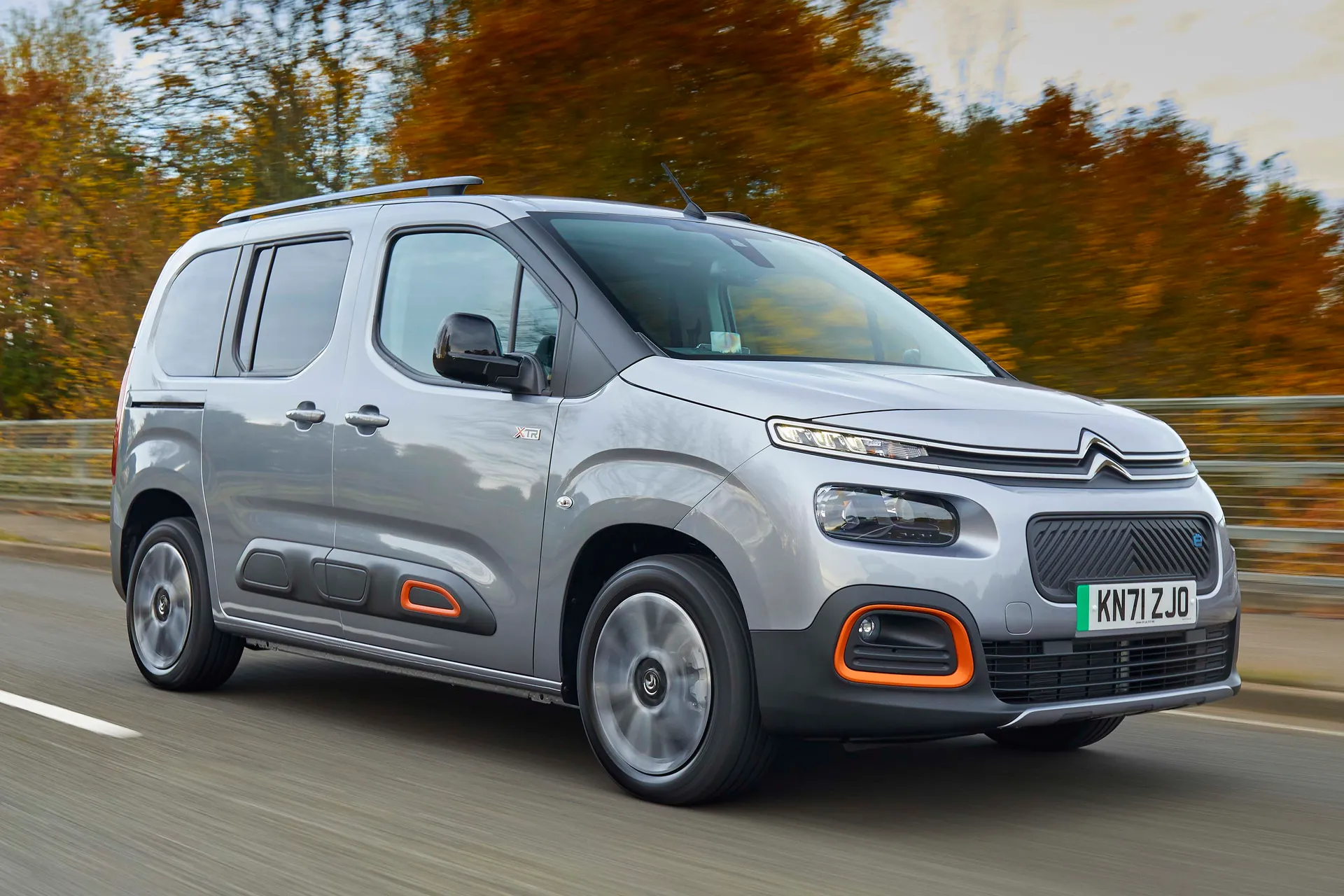
Most importantly in a car designed to carry lots of people, it rides comfortably. The soft suspension absorbs bumps and potholes really effectively, giving you a settled and smooth time. Interestingly, you'll find that the passenger-carrying Berlingo gives you a smoother time than the commercial vehicle version. We suspect this is due to the added weight of the extra seats and windows sitting on the springs. Whatever the reason, things feels generally less jumpy.
Okay, so the handling isn't quite as polished as in the best passenger cars, but by the same token, it's probably less clumsy than you might expect given the car's humble origins. You might be surprised by how much grip there is in corners, and by how well body roll is kept in check. It’s not a vehicle that relishes fast direction changes, sure enough, but it doesn’t feel fearful of them, either. Those changes of direction might involve a disproportionately large amount of arm-action, though, because the steering is very slow. However, it’s also very light, which is handy when performing low-speed manoeuvres.
What motors and batteries are available in the Citroen e-Berlingo?
When it was first released, the e-Berlingo came with a 52kWh battery attached to a 136PS electric motor with 260Nm of torque, and it had an official range of up to 177 miles, depending on the model. The facelifted model, introduced in 2024, increased that slightly, with a figure up to 212 miles. That’s still not loads by modern standards, but it could be enough for drivers who aren’t doing mammoth motorway slogs every day.
In terms of power, the precise amount you get varies according to which of the three driving modes you select. To get the full 136PS, you'll need Power mode, but even then, the car certainly isn’t quick. The 0-62mph dash takes 11.7 seconds according to official figures, but in terms of sensation, the pickup feels brisk off the line, and the acceleration is then unfurled fairly gently from then on.
Sitting at the other end of the spectrum is Eco mode. This preserves your range slightly better by limiting your power output to just 82PS, and it also reduces the functionality of your air-con and heating for the same reason. Unsurprisingly, your progress becomes much less urgent, although you still have just about enough oomph to keep pace with traffic at low-to-middling speeds without feeling like you’re getting in anyone’s way.
As the name suggests, Normal mode is the one that the car defaults to when you switch it on, and this provides a middle ground between the two extremes, with 109PS on tap. However, performance levels feel closer to Power mode than they do to Eco, so this mode will be enough for pretty much any driving situation you face.
The acceleration you get is delivered in one constant unbroken stream, regardless of which of the modes you choose. That’s because, like in most EVs, the e-Berlingo doesn’t have a gearbox - it doesn’t need one because a single fixed-ratio gear will do - so there are no gearchanges to get in the way of your progress.
Refinement and noise levels
You hear a faint whirr from the e-Berlingo's electric motor when pulling away, and occasionally when picking up speed, but this noise is obviously a lot quieter than a combustion engine would be. Road and wind noise can be moderately intrusive at higher speeds, the wind buffeting off the big side mirrors and echoing around the vast interior space. You soon get used to it, however. Overall, this is a very easy and comfortable car to cruise in.
Safety equipment: How safe is the Citroen e-Berlingo?
Safety organisation Euro NCAP decided that the four-out-of-five-star rating for the Peugeot Rifter applied to the mechanically identical Citroen Berlingo and e-Berlingo, too, following its test in 2018.
The missing star is down to the fact that the automatic emergency braking system isn’t particularly sophisticated, but the Berlingo is nevertheless packed with safety kit as standard. Lane-keep assist and traffic sign recognition are also included, as is a driver-attention alert system in case you get sleepy while on the road.
Charging times: How much does it cost to charge the Citroen e-Berlingo?
"Plug the Citroen e-Berlingo into a 7.4kW home wall box charger, as most owners will, and you'll get a full charge in around eight hours. Try doing it on a regular three-pin domestic socket, and it'll take more like 24 hours, and the real kicker is that you'll have to pay extra for the cable that allows you to do it."
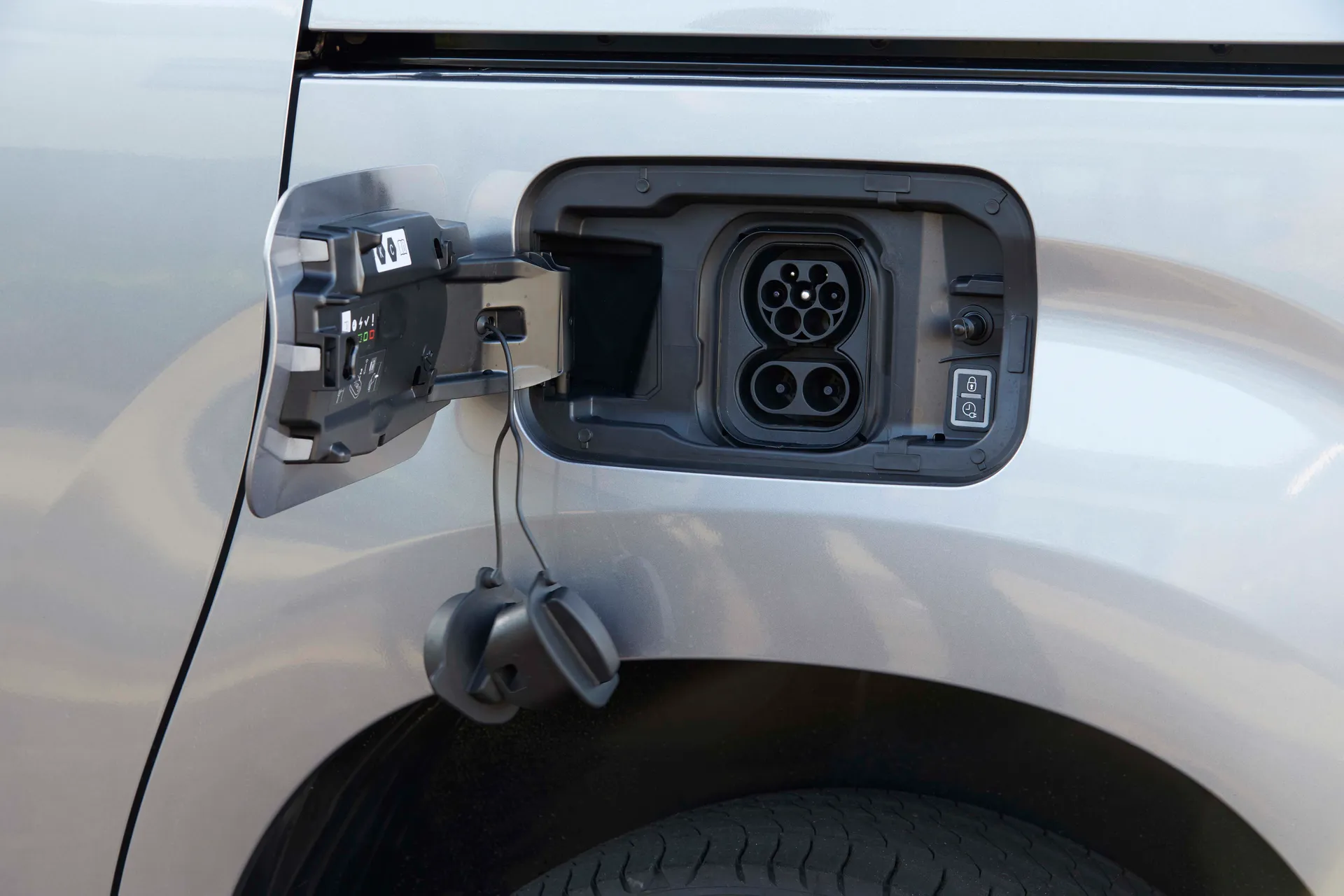
Either way, that home charge is likely to cost you around £15, assuming that your domestic power is charged at the UK's national average rate. However, if you get yourself on a tariff that allows you to charge your car overnight on discounted off-peak power, then you'll pay a lot less to top up your battery.
The Citroen e-Berlingo can be charged at up to 100kW from a DC rapid charger. That means it can recharge from zero to 80% capacity in around 30 minutes. However, it'll be far more expensive than a home charge: we're talking three to four times as much in most cases.
The charging point is on the left-hand side of the car at the back.
Citroen e-Berlingo reliability and warranty
The Citroen Berlingo range – including the non-electric models – scored well in the HonestJohn.co.uk Satisfaction Index with an average rating of 8.78 out of 10 for reliability. That said, Citroen as a brand came a rather poor 26th out of 30 manufacturers.
Citroen's standard warranty is three years long with unlimited mileage for the first two years and a cap of 60,000 miles for the third year. There's a separate warranty for the battery that kicks in if the capacity drops below 70% during the first eight years or 100,000 miles of driving.
Citroen e-Berlingo insurance groups and costs
Depending on the model you go for, the Citroen e-Berlingo sits in insurance groups 18 to 20 (of 50), or if you go for a car from after the 2024 facelift, between groups 20 and 21. That’s higher than the standard non-electric Berlingo, which sits in groups 8 to 14 (post-facelift, 12 to 15), but comparable to other electric MPVs like the Peugeot Rifter and the Vauxhall Combo Life Electric.
VED car tax: What is the annual road tax on a Citroen e-Berlingo?
Right now, you won’t pay any Vehicle Excise Duty on the all-electric Citroen e-Berlingo, but that will change later this year. From April 2025, electric cars will likely attract the same flat rate of car tax as combustion-engined vehicles, which is currently £190 a year.
Citroen e-Berlingo price
"Buy a brand new e-Berlingo, and you'll be paying between £31,000 and £33,000, depending on the version you go for. Buy used, however, and you can cut that figure almost in half."
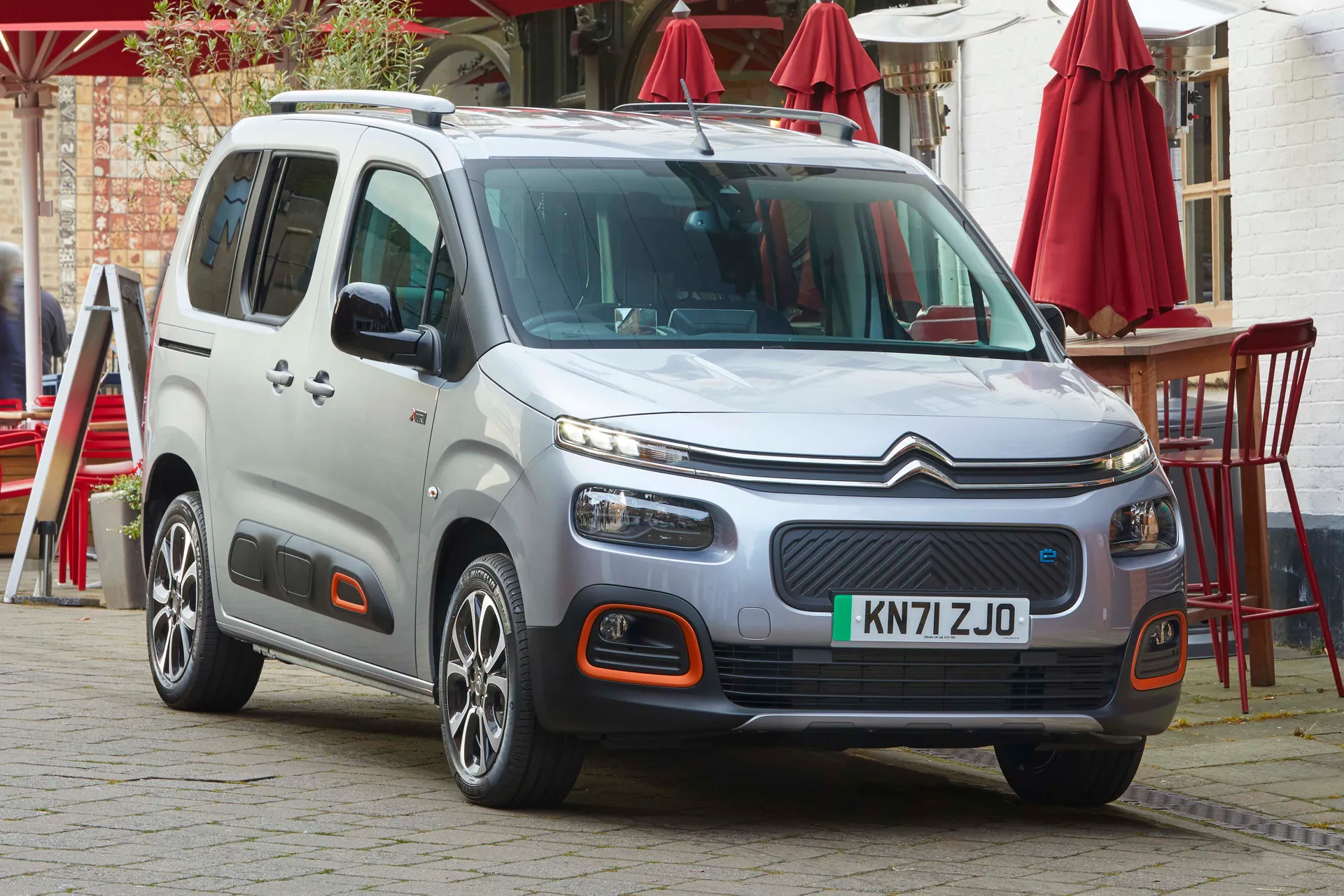
A very quick browse of the heycar classifieds shows that the cheapest versions of the e-Berlingo are changing hands at around the £17,000. These will likely be the pre-facelift car, but they'll be only around two years old and will have somewhere in the region of 20,000 miles on the clock. For that sort of price reduction, that's really not to be sniffed at.
Trim levels and standard equipment
The original Citroen e-Berlingo, introduced in 2021, came in a choice of two trims – Feel, which was available in both M and XL versions, and Flair XTR, which was only available on the M model.
As standard, the Feel model comes with two sliding doors and 'Airbump' styling that helps protect the bodywork against car park dings. It features the 8.0-inch infotainment screen with Android Auto and Apple CarPlay as well as rear parking sensors.
Flair XTR adds 17-inch alloy wheels, black roof bars and door mirrors and orange exterior elements, while inside, there's a 10-inch digital instrument display and a head-up display, too, as well as sat nav.
Several features were options so look out for used examples with them fitted. These include a reversing camera on the Feel model, keyless go and adaptive cruise control. The panoramic roof and ceiling storage was optional, too, and only on the M model.
The refreshed e-Berlingo, sold from 2024, has different trim levels: Plus and Max. Plus features rear parking sensors, a reversing camera, the digital instrument display and adaptive cruise control. The Max trim adds more comfortable (and brightly coloured) front seats, independent sliding and folding rear seats and gloss black roof bars.
Ask the heycar experts: common questions
What is the range of the Citroen e-Berlingo?
Is the Citroen e-Berlingo a good car?
Is there a new Citroen e-Berlingo?
Get our latest advice, news and offers
Keep me updated by email with the latest advice, news and offers from heycar.
By submitting you agree to our privacy policy
